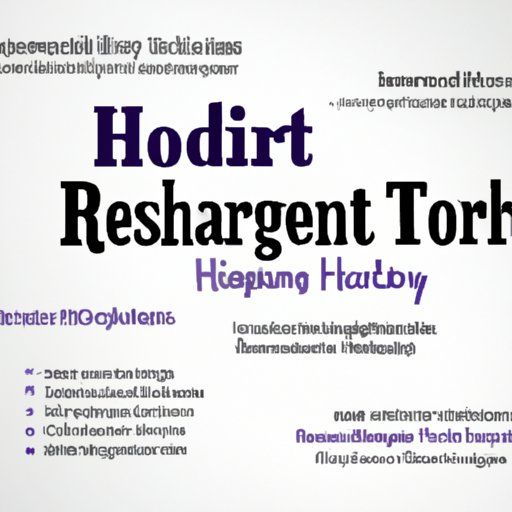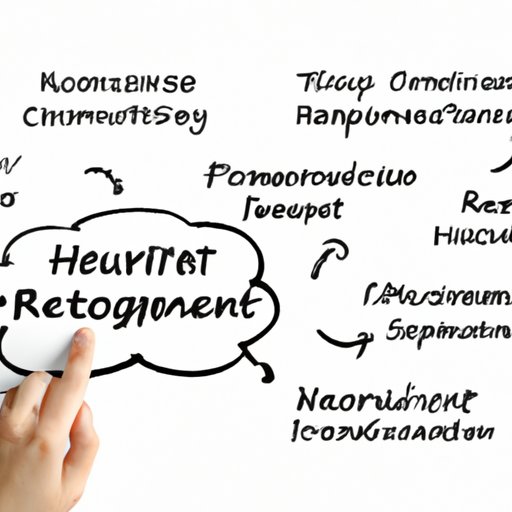Introduction
Human Resources (HR) technology is an umbrella term used to describe any type of software or hardware that helps automate and streamline HR processes. It can range from recruitment and onboarding software to payroll and attendance tracking systems. By leveraging the power of technology, HR professionals are able to more effectively manage their organization’s human resources and ensure compliance with laws and regulations.
The use of HR technology has become increasingly popular in recent years as organizations strive to remain competitive in today’s rapidly changing business landscape. From reducing paperwork and administrative costs to improving employee engagement and productivity, there are numerous benefits associated with HR technology.
A Guide to Implementing HR Technology
When implementing HR technology, it’s important to have a clear plan and set of goals. This will help ensure a successful transition and allow you to measure progress along the way.
Establish Goals: Before selecting a particular HR technology, it’s important to define your goals and objectives. Do you want to improve the efficiency of HR processes? Streamline recruitment efforts? Increase employee engagement? Answering these questions will help you identify the right solution for your needs.
Identify the Right Technology: Once you’ve established your goals, it’s time to start researching different HR technology solutions. Consider the features offered, ease of use, cost, customer support, and other factors to ensure you select the best option for your organization.
Develop a Plan: After selecting an appropriate HR technology solution, create a detailed plan for implementation. How will you roll out the new system? What changes need to be made to existing processes? Will users require training? Answering these questions will help ensure a smooth transition.
The Evolution of HR Technology
From punch cards to cloud-based software, the history of HR technology is one of continuous innovation and improvement. Here’s a look at some of the major milestones in the evolution of HR technology.
1960s: The introduction of punch cards marked the first major step in the automation of HR processes. By allowing employers to easily track employee hours, this technology helped reduce paperwork and administrative costs.
1970s: With the rise of personal computers, employers began to adopt computerized HR systems. These systems allowed employers to store data in an organized manner, making it easier to access and analyze information.
1980s: The 1980s saw the emergence of enterprise resource planning (ERP) systems. These powerful software solutions allowed employers to manage their entire HR operations, from payroll and benefits administration to recruiting and training.
1990s: The growth of the internet enabled HR departments to conduct operations online. This allowed for more efficient management of employee records, streamlined communication, and improved collaboration between departments.
2000s: The dawn of the 21st century ushered in the era of cloud computing. Cloud-based HR systems allowed employers to access their data from anywhere in the world, eliminating the need for expensive hardware and software.
How to Choose the Right HR Technology for Your Business
Choosing the right HR technology for your business can be tricky. Here are a few tips to help you make the right decision.
Assess Your Needs: First and foremost, assess your organization’s needs and determine which features are essential. Do you need a system that can handle payroll and benefits administration? Or do you need something more robust that can manage recruitment and training as well?
Understand Your Options: Once you’ve identified your needs, it’s time to start researching different HR technology solutions. Read reviews, compare features, and consult with experts to make sure you’re selecting the best option for your organization.
Consider Cost: Cost is always a factor when selecting HR technology. Make sure you understand all the associated costs, including setup fees, monthly subscriptions, and additional charges for upgrades and maintenance.

Analyzing the Impact of HR Technology on Employee Performance
HR technology can have a significant impact on employee performance. Here are a few ways HR technology can improve employee performance:
Streamlined Processes: By automating mundane tasks such as timekeeping and leave requests, HR technology can free up employees to focus on more important tasks. This saves time and increases efficiency, leading to improved performance.
Improved Communication: HR technology can also facilitate better communication between employees and managers. This can lead to better collaboration, increased transparency, and improved morale.
Increased Productivity: By providing employees with real-time feedback and performance metrics, HR technology can help increase motivation and productivity. According to a study by Deloitte, “Organizations that implement HR technology see an average 15% increase in employee productivity.”

Strategies for Utilizing HR Technology to Improve Engagement
HR technology can also be used to improve employee engagement. Here are a few strategies for utilizing HR technology to boost engagement:
Automate Tasks: Automating mundane tasks such as time tracking and leave requests can help reduce bureaucracy and free up employees to focus on more meaningful work. This can help improve engagement and job satisfaction.
Foster Collaboration: HR technology can also help foster collaboration among employees. By providing tools for video conferencing, instant messaging, and file sharing, HR technology can help keep employees connected and engaged.
Track Progress: HR technology can provide employees with real-time performance metrics, allowing them to track their progress and stay motivated. Additionally, managers can use HR technology to provide timely feedback and recognition, further boosting engagement.

An Overview of the Latest Trends in HR Technology
As technology continues to evolve, so too does HR technology. Here’s a look at some of the latest trends in HR technology:
Artificial Intelligence: Artificial intelligence (AI) is being used to automate many HR processes, such as recruitment and payroll management. AI-powered chatbots can even be used to provide personalized customer service to employees.
Cloud Computing: Cloud-based HR systems are becoming increasingly popular due to their scalability and cost-effectiveness. They allow employers to access data from anywhere in the world, making remote work more feasible.
Wearable Technology: Wearable devices such as fitness trackers and smart watches are becoming more common in the workplace. These devices can be used to track employee health and safety, as well as provide real-time feedback on performance.
Conclusion
HR technology can play a crucial role in helping organizations manage their human resources more effectively. From reducing paperwork and administrative costs to improving employee engagement and productivity, the benefits of HR technology are clear. As technology continues to evolve, HR technology will continue to advance, making it easier for employers to manage their workforce and stay competitive in today’s business landscape.
(Note: Is this article not meeting your expectations? Do you have knowledge or insights to share? Unlock new opportunities and expand your reach by joining our authors team. Click Registration to join us and share your expertise with our readers.)
